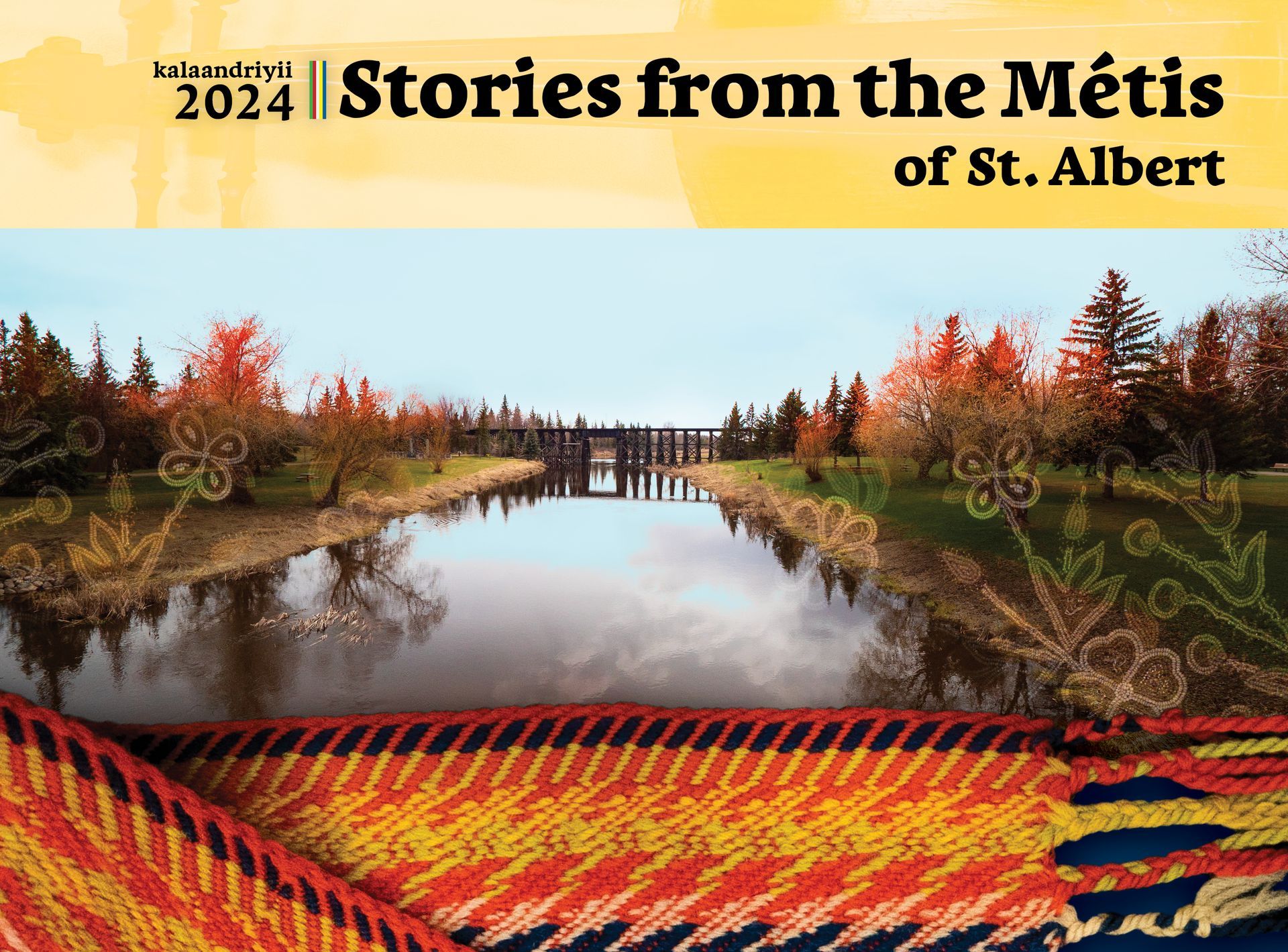STORIES FROM THE MÉTIS
of St. Albert
After producing the Stories from the bush calendar with the late Henry Laboucan, Cree Métis Elder Elsie Paul approached us to do a similar kind of project for the Kohkom Kisewatisiwin Society to use as a teaching tool and fundraiser. We produced two calendars in collaboration with them, Stories from the kohkoms I and II.
Other communities have seen and loved our calendars, and we were invited by Métis community members in the St. Albert area to complete this calendar. This publication contains a combination of oral storytelling and knowledge-sharing, in addition to archival research.
The historic and contemporary photographs and stories in this calendar were sourced from the archives of the City of St. Albert, the Arts and Heritage Foundation of St. Albert, the Musée Héritage Museum, and Michif Cultural Connections. Their gracious support and assistance allowed this calendar to come together with stories that focus specifically on the long and unique history of the Métis of St. Albert.
Included in this resource are:
- History timeline from the 18th century to today.
- Thirty two photographs and illustrations are included to accompany both the timeline and story months.
- Twelve stories that present the history of St. Albert from a Métis perspective.
- Daily moon phases for the twelve months.
- Altogether 34 pages of colour images and 6,000 words.
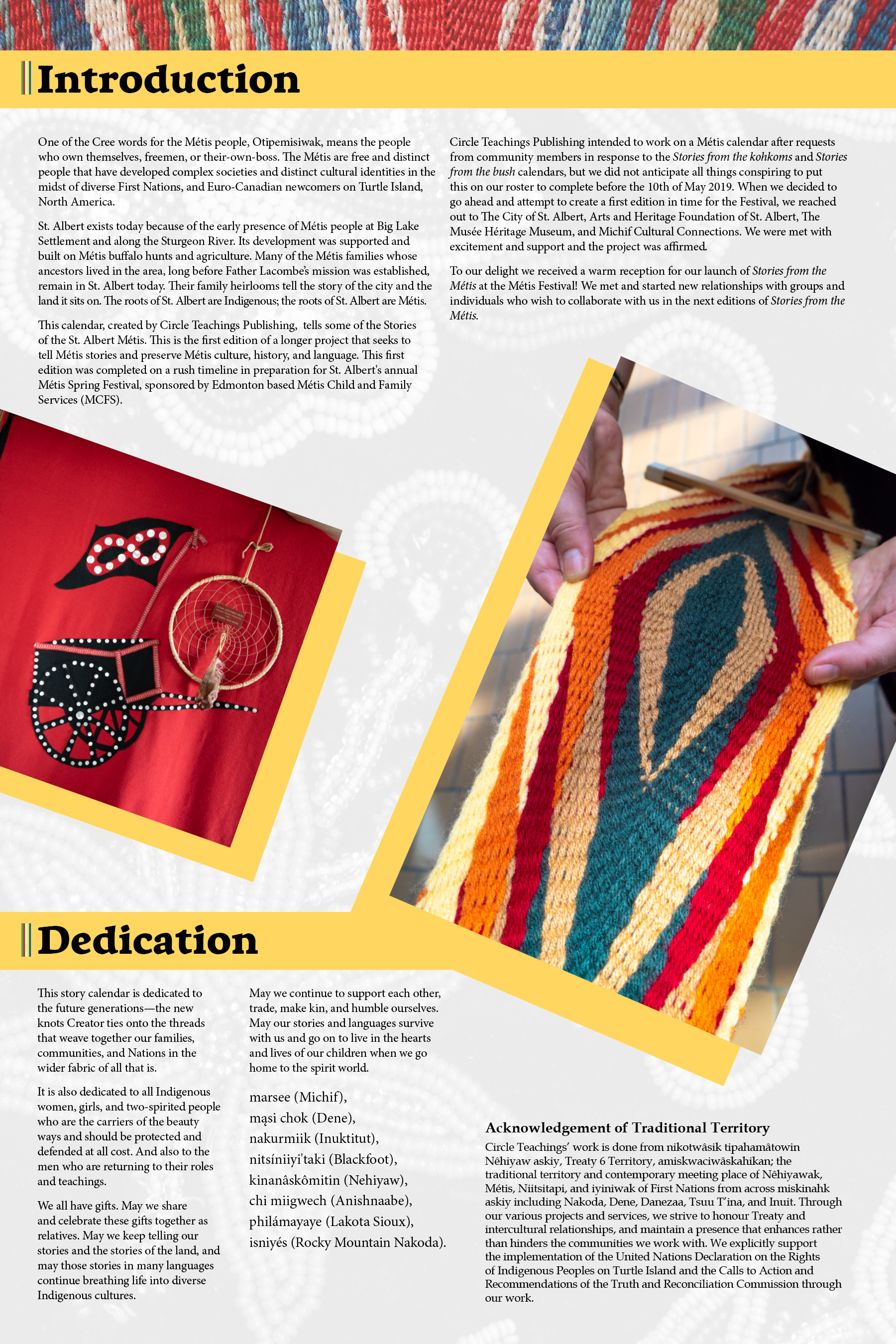
Slide title
Write your caption hereButton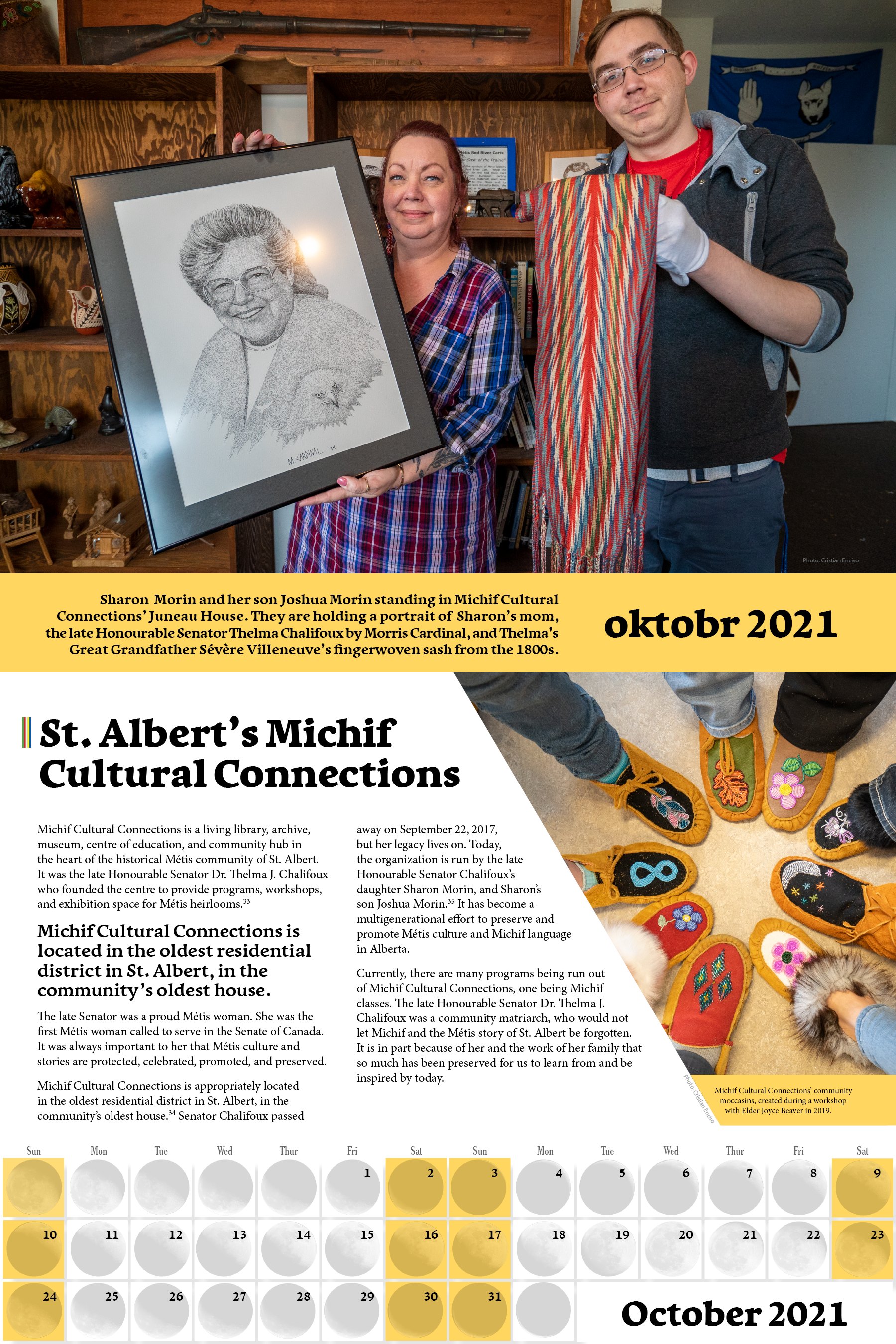
Slide title
Write your caption hereButton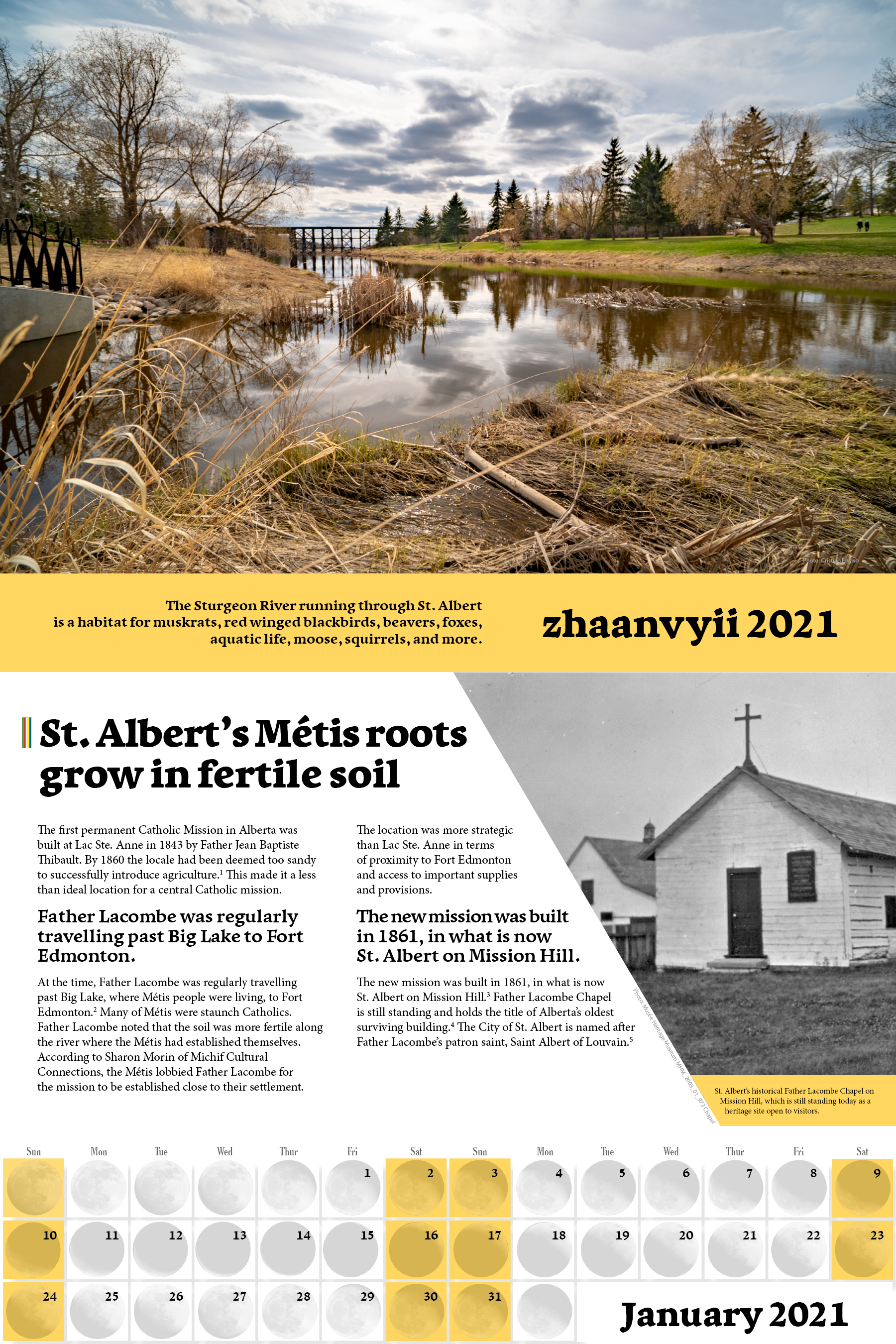
Slide title
Write your caption hereButton
Slide title
Write your caption hereButton
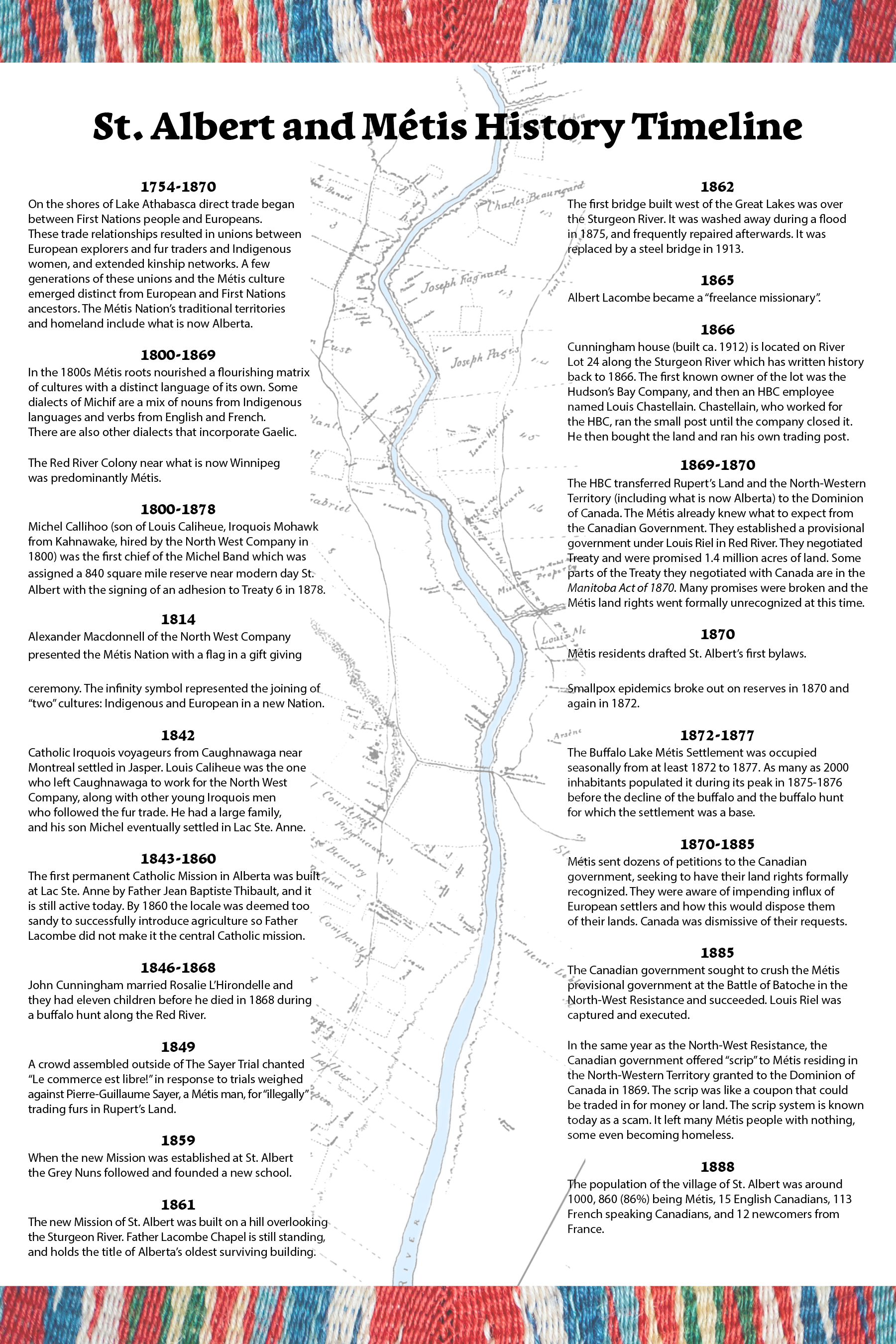
Slide title
Write your caption hereButton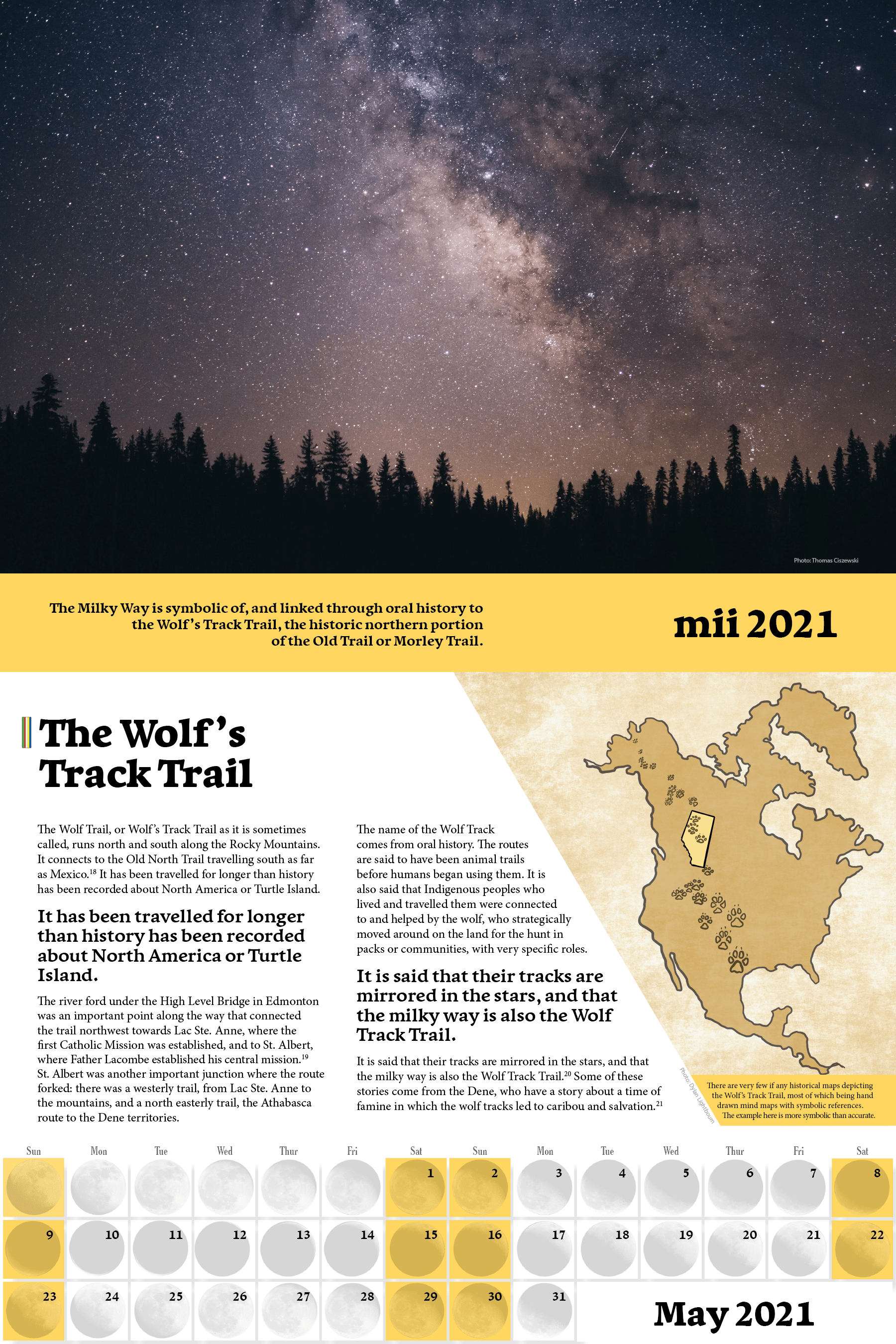
Slide title
Write your caption hereButton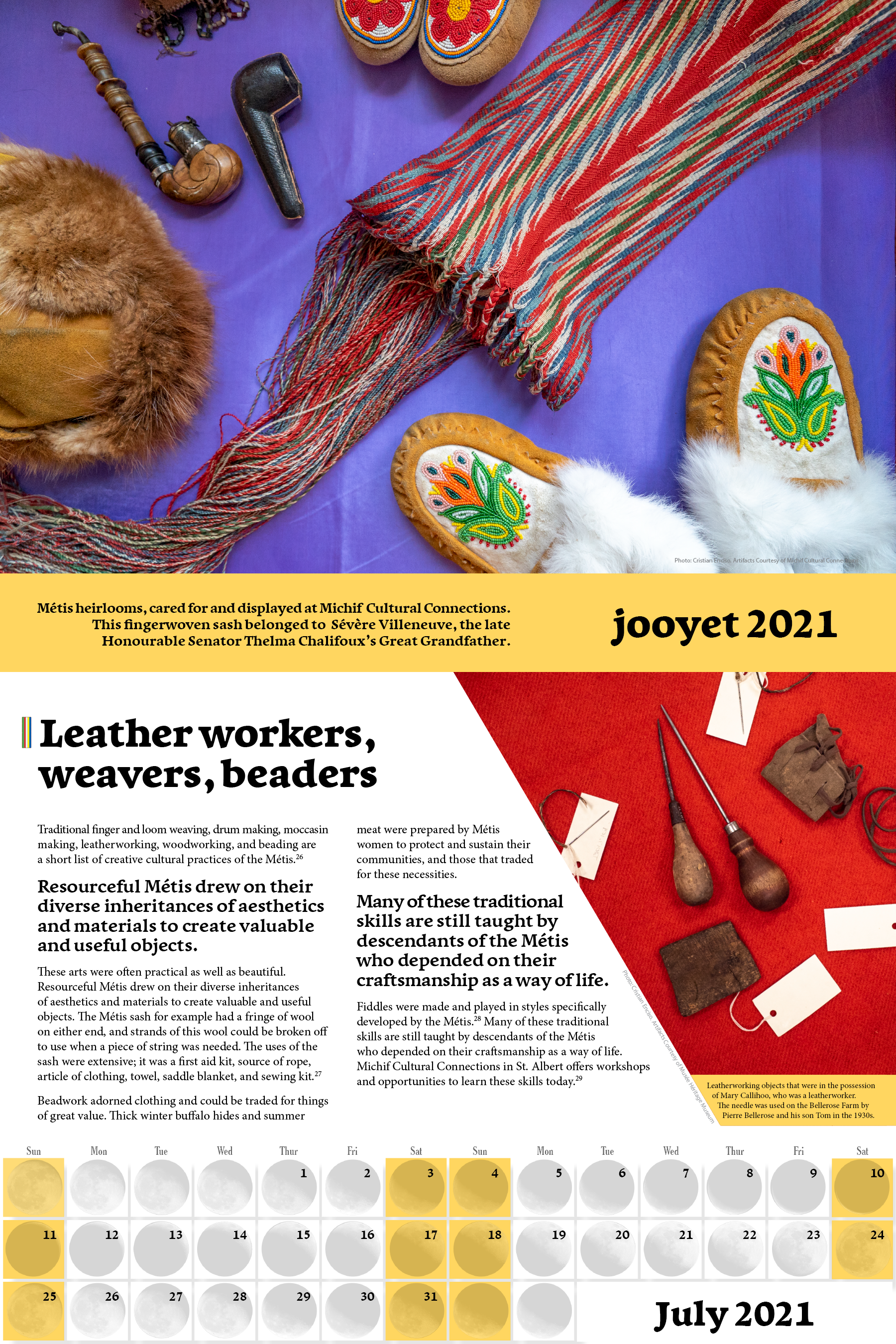
Slide title
Write your caption hereButton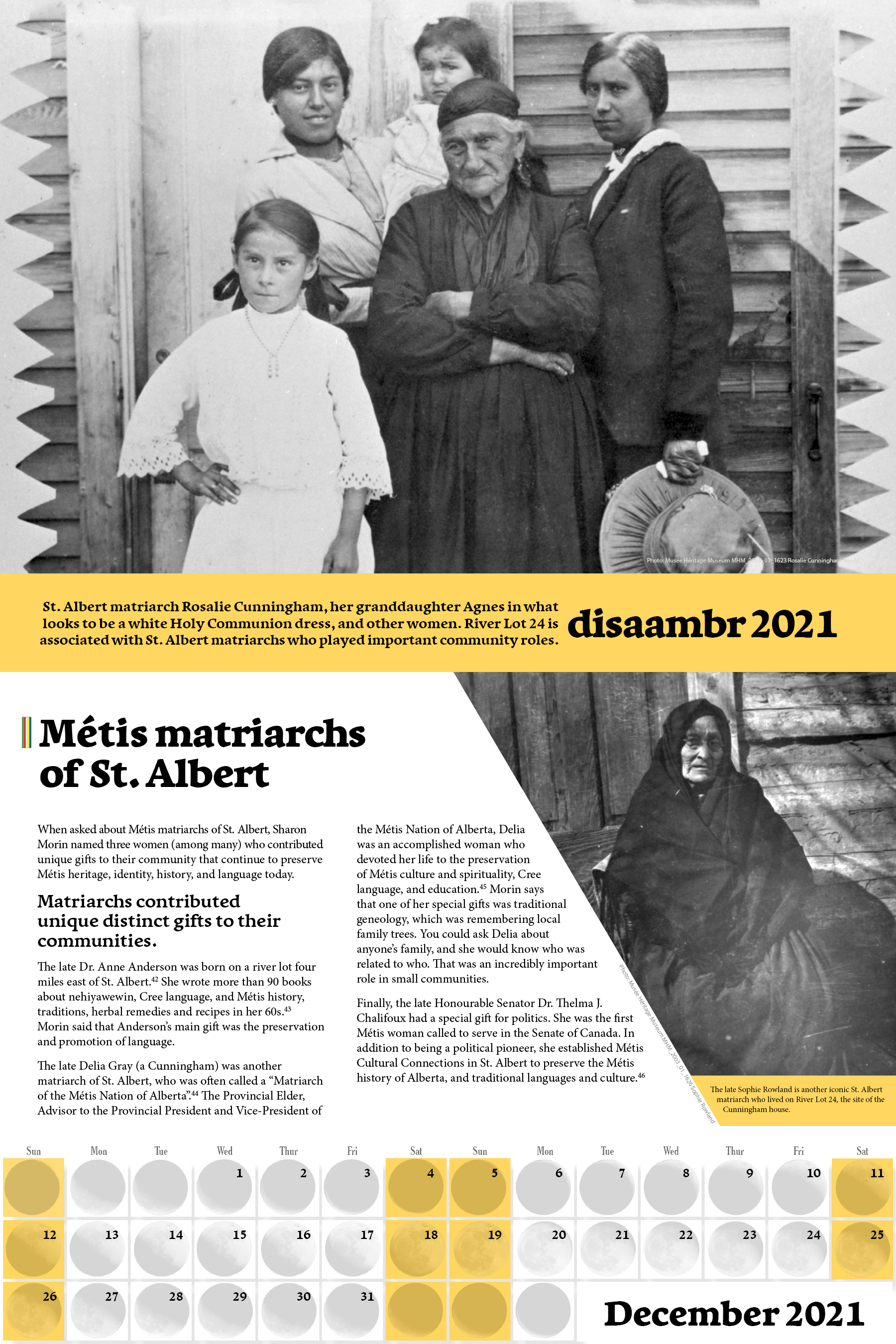
Slide title
Write your caption hereButton
Frequently Asked Questions
-
Why Métis of St. Albert?
This project was motivated by and to be completed in time for the Métis Spring Festival in St. Albert, an event sponsored by Métis Child and Family Services. The City of St. Albert has a rich history of Métis life, and before the city was established, the area was actually the Big Lake Settlement, which was predominantly Métis. St. Albert’s first Bylaws were written by Métis people. The City of St. Albert sponsored the calendar and the Musée Héritage Museum was very generous in making holdings and staff available to help.
-
Will there be other Métis calendars?
Yes; we plan on creating Stories from the Métis of Edmonton next, and continuing on from there to other communities. Our approach is to focus on specific areas to show the diversity within Métis communities, and between Indigenous cultures regionally. Cultural diversity between and within First Nations, Inuit, and Métis communities is too often overlooked and painted with too broad a brush.
-
Why are Métis stories important?
Assimilation policies were not just aimed at First Nations and Inuit peoples, but Métis peoples as well. Métis people have always had to lobby for their distinct culture, political sovereignty, self-determination, and rights, which have been slowly and reluctantly recognized by the Canadian Government. Métis stories are too often left out of both Indigenous and Canadian tellings of history. During the Constitution talks in the early 1980s they were almost not given a voice and had to speak through a prayer that Father Guy Lavallee cleverly delivered so that the Métis were recognized. History books regularly fail to address the corruption in the scip policies that disinherited Métis peoples from their land bases, and the impact of residential schools on Métis peoples. Because Métis have European as well as First Nations ancestry, their distinct Indigenous identities, culture, relationship to homelands, and rights have been wishfully dismissed and not recognized by Canada during ongoing efforts to assimilate Indigenous populations and solve its “Indian problem”. Métis Cree Elder Elsie Paul says with every project that Circle Teachings has done that we cannot leave out or forget the Métis, because it has happened too often in the history of Canada already.
-
Why does this calendar not include fur trade history?
Métis presence in Canadian history is too often confined to the fur trade and the Red River Resistance. Settlements of Métis people existed in places where large cities have since established themselves, and the credit to “founding” those cities too often goes to a European religious or political leader who decided it would be a Canadian city, despite it being built on the hard work, resourcefulness, and skill of Métis people already living there. And Métis descendents of the founding mothers and fathers of these cities still live in them, with too many of them facing barriers to a good quality of life because of the history of colonization that only began with the fur trade.
Stories from the Métis of St. Albert recognizes the historical and ancestral ties that contemporary Métis people have to their homelands, which Canadian cities are built on. We want to focus on lesser-told stories about the Métis, and the fur trade stories have been told many times, not that they aren’t important! We will discuss the fur trade more in Stories from the Métis of Edmonton. Métis people lived, died, and were buried in Edmonton, and their descendents still call this place home, yet are given little say in land-use, place-naming, or recognition in terms of connections to territory beyond a territory / treaty acknowledgement at City events. We will go more into this story in the Stories from the Métis of Edmonton edition, specifically in regard to Fort Edmonton and Rossdale Flats.
-
When will future editions be created, such as the one that includes Edmonton stories?
Future editions and additions to the current printing will be made when we secure funding to move forward on our plans. We are currently reaching out to sponsors to support this process.
